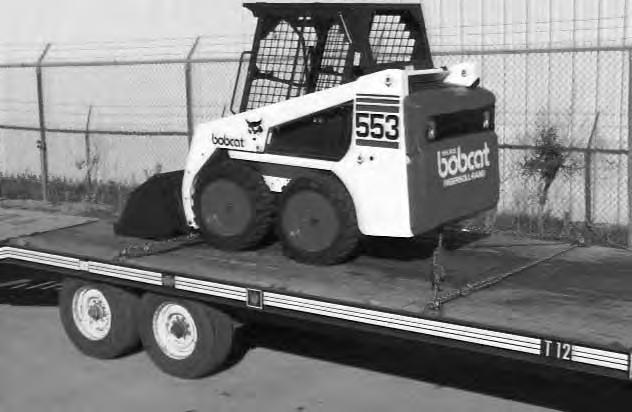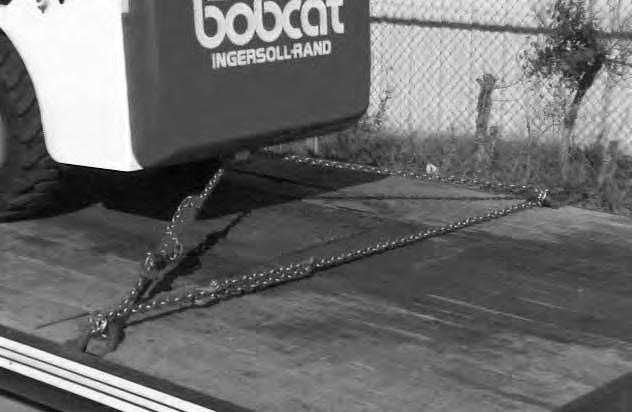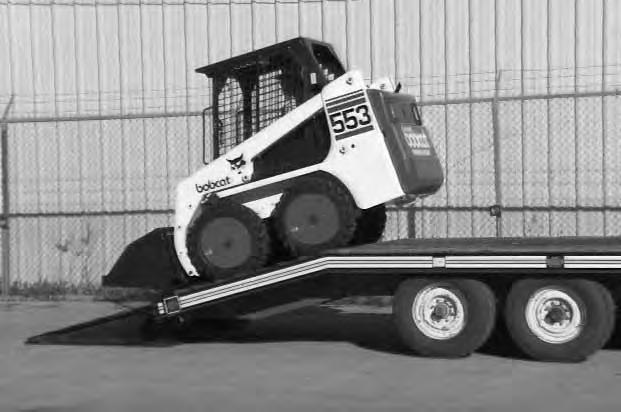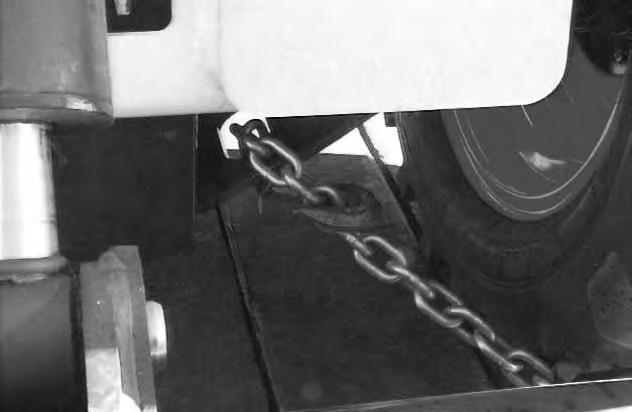
2 minute read
PARKING THE BOBCAT LOADER
Stop the Bobcat loader on level ground.
Lower the lift arms fully and put the edge of the bucket on the ground.
Pull the throttle all the way backward. Turn the key switch to the OFF POSITION.
Avoid Injury Or Death
Before you leave the operator’s seat:
• Lower the lift arms, put the attachment flat on the ground.
• Stop the engine.
• Engage the parking brake.
• Raise seat bar, move pedals until both lock.
Engage the parking brake.
Lift the seat bar and make sure the foot pedals are in the locked position.
Unbuckle the seat belt. Remove the key from the switch to prevent operation of the loader by unauthorized personnel.
Transporting The Bobcat Loader
Adequately designed ramps of sufficient strength are needed to support the weight of the machine when loading onto a transport vehicle. Wood ramps can break and cause personal injury.
A loader with an empty bucket or no attachment must be loaded backward onto the transport vehicle [A].
The rear of the trailer must be blocked or supported [A] when loading or unloading the loader to prevent the front end of the trailer from raising up.
Use the following procedure to fasten the Bobcat loader to the transport vehicle to prevent the loader from moving during sudden stops or when going up and down slopes [B]


• Lower the bucket or attachment to the floor.
• Stop the engine.
• Engage the parking brake.
• Install chains at the front and rear of the loader as shown [B]

Lifting The Loader
Avoid Injury Or Death
• Before lifting, check fasteners on single point lift and operator cab.
• Assemble front cab fasteners as shown in manual.
• Never allow riders in the cab or bystanders within 15 feet (5 meters) while lifting the machine.
The loader can be lifted with the single point lift which is available as a kit from your Bobcat loader dealer.
Fasten the pins (Item 1) [A] in the kit as shown in figure.
The single point lift, supplied by Melroe Company is designed to safely lift and support the Bobcat loader.
Towing The Loader
Never attempt to start the engine by pushing or pulling. Hydrostatic pumps and motors will be damaged.
To prevent damage to the loaders hydrostatic system, the loader must be towed only a short distance at slow speed. (Example: Moving the loader onto a transport vehicle).
Relief valve release tool set MEL1220 is available from your dealer. Tool must be installed before towing.
Raise the operator cab. (See Raising The Operator Cab Page 32 for the correct procedure.)
Clean the area around the hydrostatic pumps. Remove the high pressure relief valve from one side of each hydrostatic pump [B] and install the relief valve tubes. Install the plugs and tighten.
Lower the operator cab. (SeeLowering The Operator Cab Page 32.)
The towing chain (or cable) must be rated at 1 and 1/2 times the weight of the loader. (See SPECIFICATIONS Page 69.)
• Turn the key switch to ON and press the traction lock override button.
• Tow the Bobcat at 2 MPH (3,2 km/hr) or less for not more than 25 feet (7,6 meters).
If the electrical system is not functioning, contact your Bobcat loader dealer. (Part of the brake system must be disassembled to move the loader.)
Stopping The Bobcat Loader
When the steering levers are moved to the neutral position, the hydrostatic transmission will act as aservice brake to stop the loader.
Do not push or pull the machine at more than 2 MPH (3,2 km/h) or for a distance of more than 25 feet (7,6 meters) with the towing tool in place.









